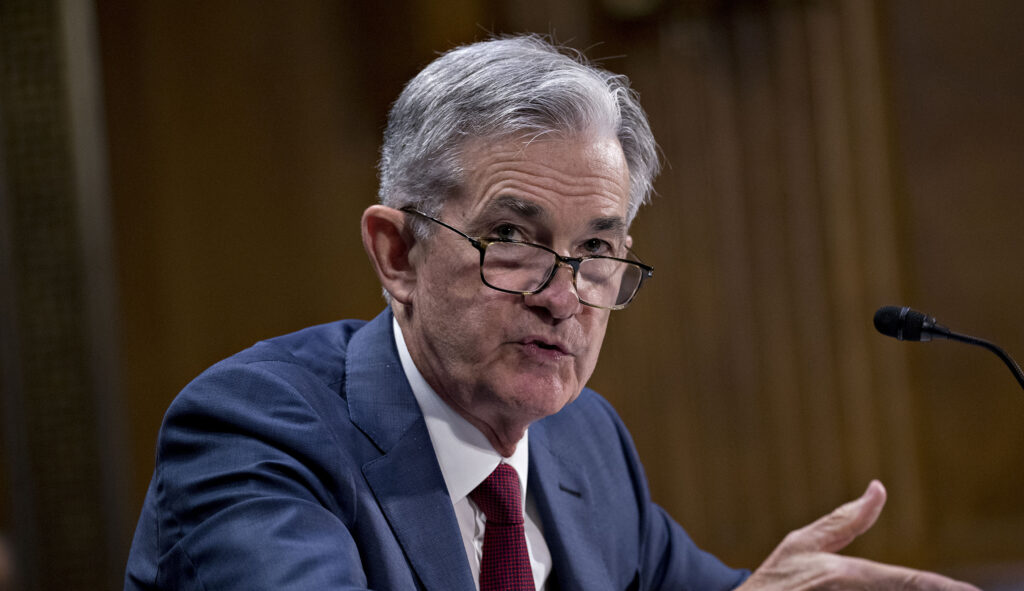Investors are ignoring two reports this week that showed annual inflation rose last month, betting that the Federal Reserve will continue cutting interest rates soon.
The first and most closely watched report, the Consumer Price Index, noted that inflation rose to 3.4% for the year ending December 2023, up from 3.1% the previous month, hotter than economists had expected. The producer price index, which measures wholesale inflation, rose to 1% from 0.8% the previous month.
On a monthly basis, which provides a more accurate look at where inflation is, the CPI rose 0.3% in December. More importantly, the Fed views healthy annual inflation as 2% price growth, so a rise is not welcome.
But investors ignored the uptick in inflation and still expect the Fed's first rate cut to come in March. In fact, after reports showed that inflation was moving, even slightly, in the wrong direction in December, the implied odds of a rate cut in March rose.
Investors now see a roughly 80% probability that the Fed will cut interest rates at its March meeting, according to CME Group's FedWatch tool, which calculates the probability using interest rate futures prices in the short-term market the Fed is targeting. This is up from 68% just one week ago.
Greg McBride, chief financial analyst at Bankrate, told Washington Examiner There is a bit of a mismatch between investors' expectations for interest rate cuts and what inflation numbers show.
“There is nothing economically compelling the Fed to start cutting interest rates immediately,” he said. “The labor market is still holding up, and even Fed members have come out and said that wage growth should fall a little more, and that the March timing may be too early. However, investor expectations continue to refute that.”
The U.S. has “seen this movie many times before,” McBride said, with investors and the market expecting the Fed to be more dovish, yet the Fed ended up throwing cold water on that idea — which created some market embarrassment. Volatility.
“It looks like we're getting ready for another episode of that,” he said.
However, it is important to note that despite the unwelcome rise in December, inflation has declined significantly over the past year. Inflation peaked at around 9% in June 2022 and by January 2023 it had fallen to 6.4% and by September 2023 it was recording 3.7%.
However, the Fed and Chairman Jerome Powell want to avoid an economically devastating scenario in which they underestimate the staying power of the current inflationary bout and end up cutting interest rates too early.
During the inflationary plague of the 1970s, inflation returned to rising after periods when the Fed stopped intervening. McBride said Powell and senior officials have that history on their minds.
“They're very aware of that, and this is an action that the Fed has taken steps to avoid repeating. They've talked a lot about the mistakes made in the 1970s and the desire not to repeat that — it's certainly on their radar screen,” he said.
The misalignment between investors and the Fed extends through all of 2024. In its latest forecast, the Fed itself expects a total of about three interest rate cuts this year. Meanwhile, investors expect double this number and expect interest rate cuts of around six.
“Today’s CPI report is a reminder that inflation, although improving, has not been beaten,” said Steve White, chief investment strategist at the Bank of Korea Financial. “Trends toward lower inflation remain, for the most part, intact, but a path of interest rate cuts closer to the Fed’s expectations, which currently stands at three this year, appears more plausible than a more aggressive market stance.”
White said the Fed's expectations appear more reasonable than those reflected in the markets.
One reason the Fed might end up cutting interest rates more than expected is in the event of a recession, a scenario the central bank has worked hard to avoid. Lowering interest rates boosts growth, although many investors expect only a mild recession at worst, while at the same time anticipating a positive year for the stock market.
Click here to read more from the Washington Examiner
“If we get six rate cuts, it's because something is going wrong in the economy,” McBride said. “If we get six rate cuts, it's because the economy has fallen into recession, and in that case you won't get earnings growth in stocks.”
Investors will be listening to the words of senior Fed officials closely in the coming weeks, especially the tone Powell will take after the Fed's next meeting later this month. January data will be crucial in indicating what might happen next for monetary policy.

“Extreme travel lover. Bacon fanatic. Troublemaker. Introvert. Passionate music fanatic.”







More Stories
Best National Burger Day Deals 2024
Trump attacks Fed for ‘playing politics’ with historic rate cut
Tesla “Magnificent Seven” (TSLA) shares report third-quarter earnings this week. Is it a buy before the results?